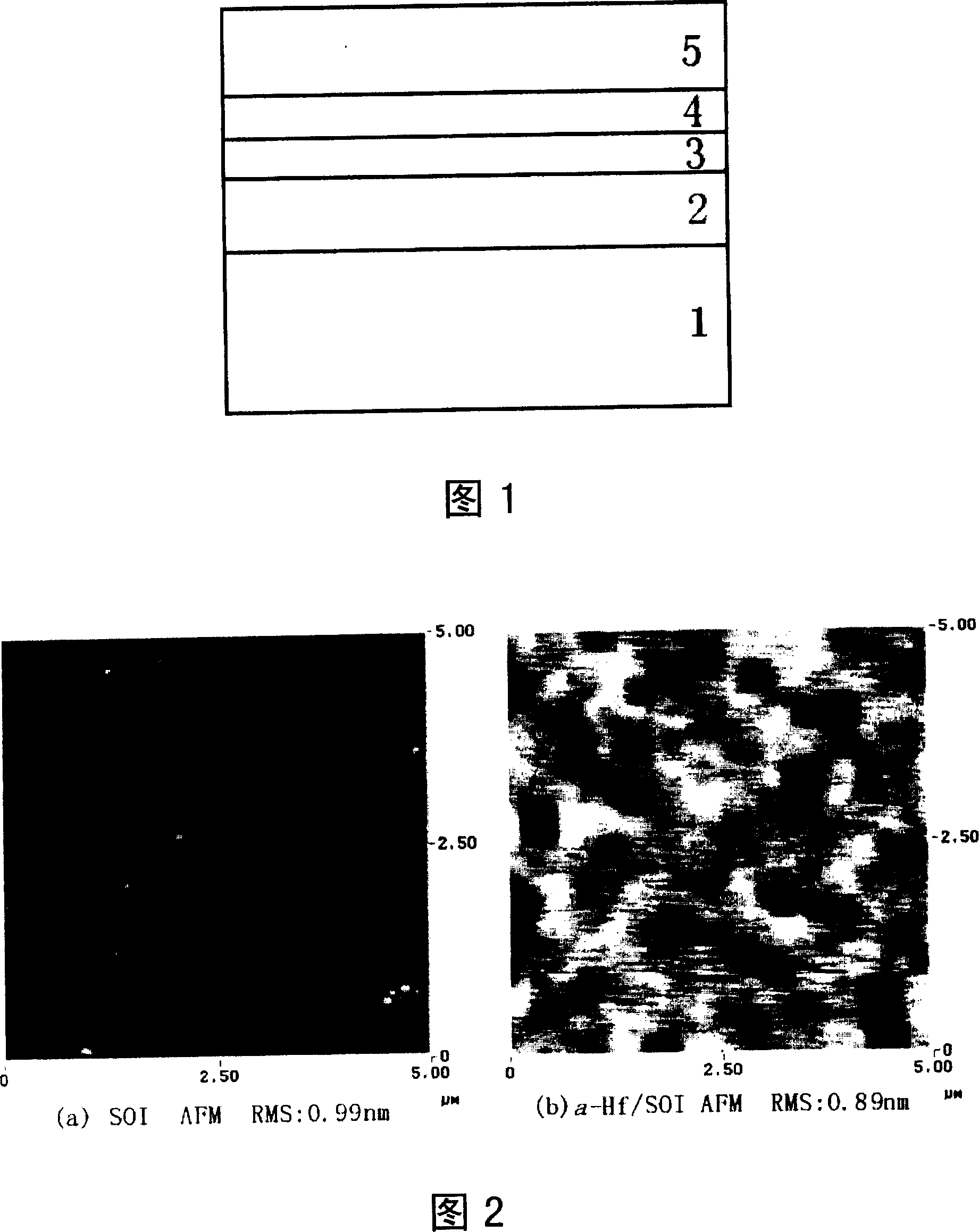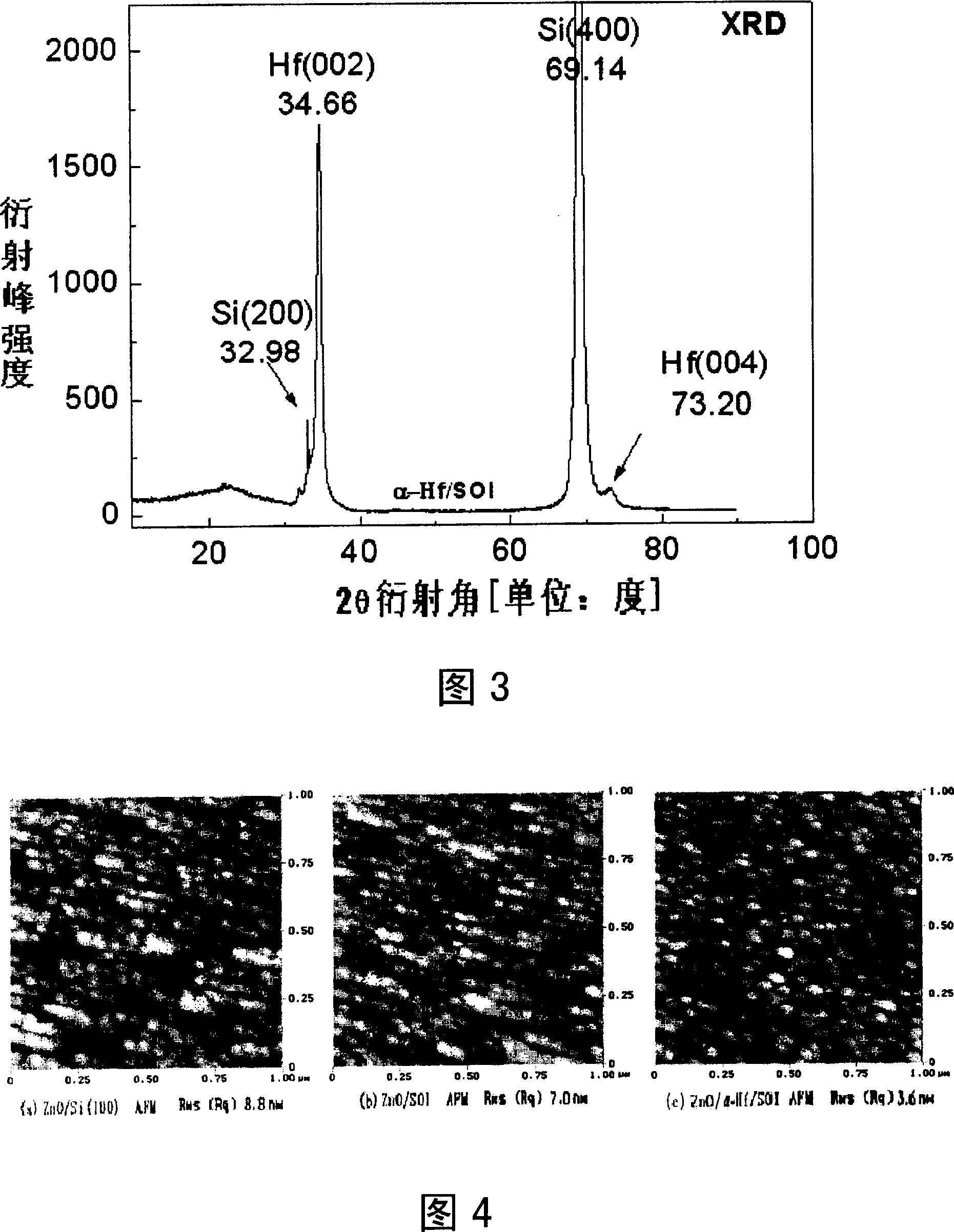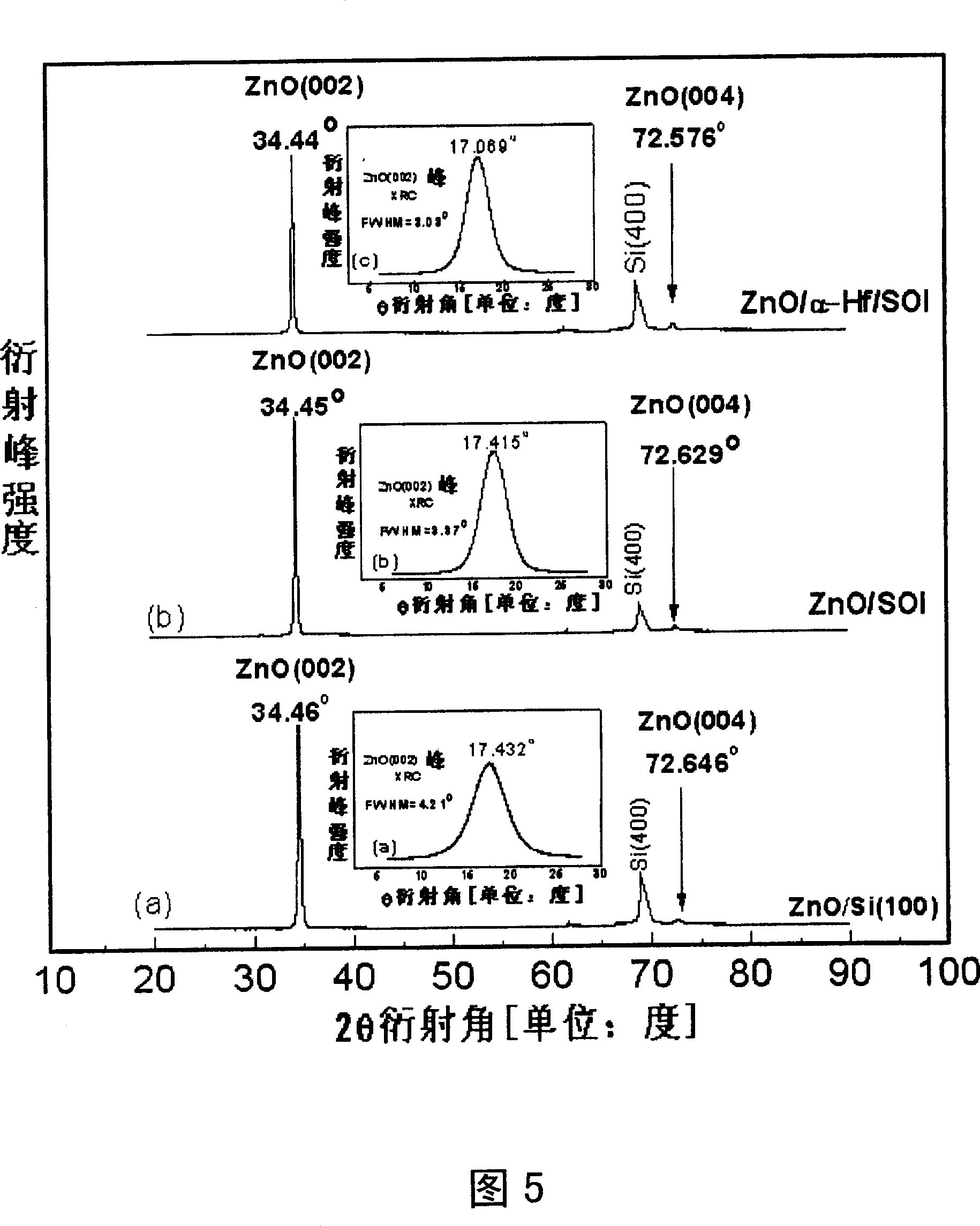SOI compound covariant layer underlay with the Ni Hafnium middle layer
An intermediate layer, hafnium nitride technology, applied in the direction of electrical components, electrical solid devices, circuits, etc., can solve the problem of weak coordination of mismatching strain of thin single crystal silicon layer, inability to overcome interface chemical reaction or interdiffusion of interface components, surface Large undulations and other problems, to achieve good mismatch strain coordination effect, superior photoelectric performance, and improve the effect of growth quality
- Summary
- Abstract
- Description
- Claims
- Application Information
AI Technical Summary
Problems solved by technology
Method used
Image
Examples
Embodiment
[0043] (1) A conventional SOI covariable substrate is selected for the preparation of an SOI type composite covariable layer substrate. Figure 1 is a schematic structural diagram of the substrate, and the main technical parameters are shown in Table 1.
[0044] Table 1: Main Technical Parameters of SOI Composite Covariable Layer Substrates
[0045]
SOI
composite
covariant
layer substrate
SOI
covariant
Substrate
the bottom
Supporting substrate
1
Material
Silicon (Si)
thickness
(μm)
300-
500
the crystal
quality
single crystal
middle
uncoupling layer
2
Material
(SiOx)
thickness
(nm)
200-
600
the crystal
quality
amorphous o...
PUM
 Login to View More
Login to View More Abstract
Description
Claims
Application Information
 Login to View More
Login to View More - Generate Ideas
- Intellectual Property
- Life Sciences
- Materials
- Tech Scout
- Unparalleled Data Quality
- Higher Quality Content
- 60% Fewer Hallucinations
Browse by: Latest US Patents, China's latest patents, Technical Efficacy Thesaurus, Application Domain, Technology Topic, Popular Technical Reports.
© 2025 PatSnap. All rights reserved.Legal|Privacy policy|Modern Slavery Act Transparency Statement|Sitemap|About US| Contact US: help@patsnap.com



